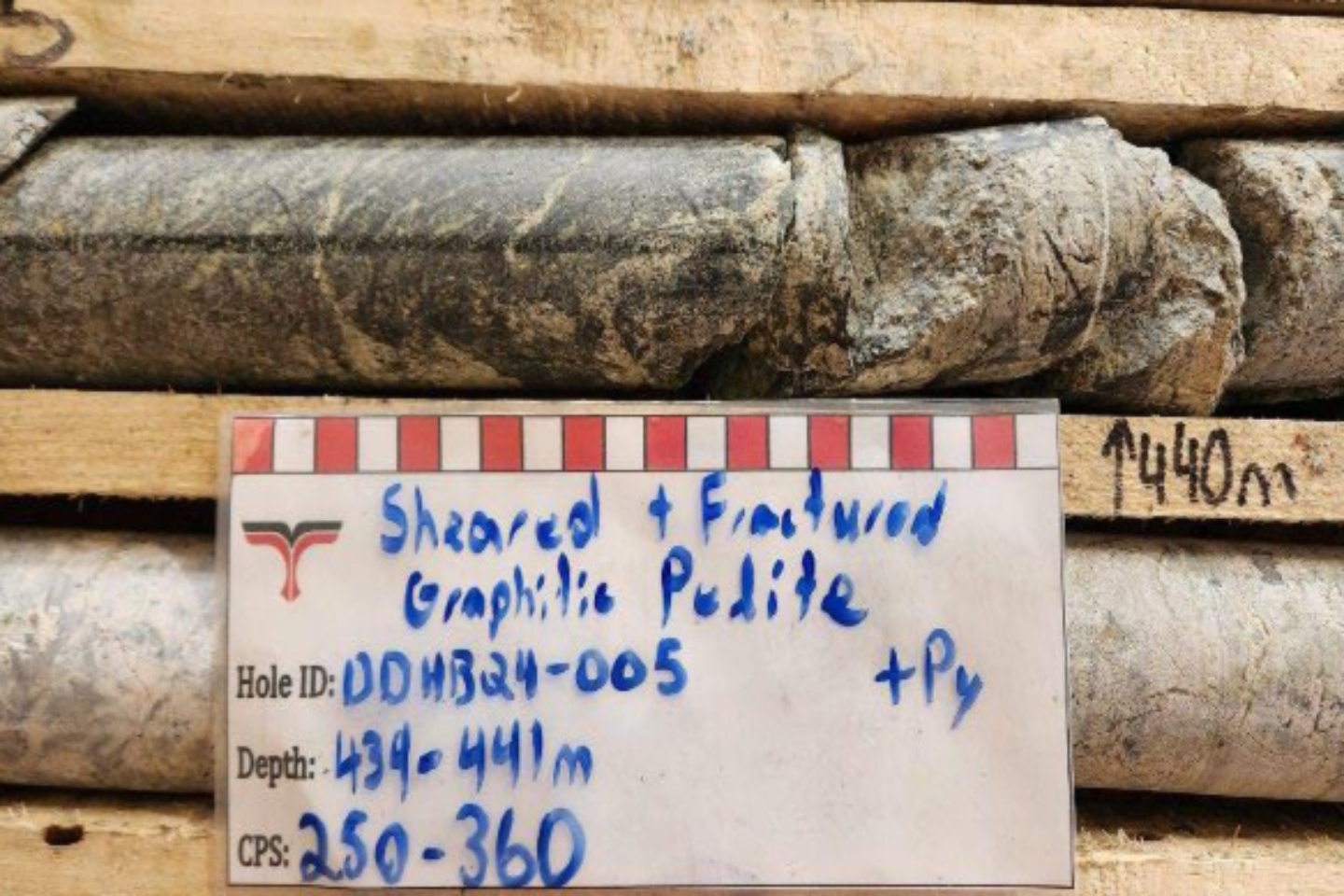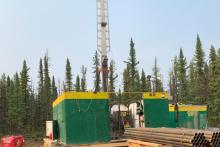Thunderbird Resources has revealed recordings of elevated radioactivity levels up to 597 counts per second using a downhole gamma probe in a maiden drilling campaign at its 100 per cent-owned Hidden Bay uranium project in Canada’s Athabasca Basin. The recordings came in the fifth and final drillhole of the program that bore through 1781m in the renowned region.


Thunderbird Resources has revealed recordings of elevated radioactivity levels up to 597 counts per second (cps) using a downhole gamma probe in a maiden drilling campaign at its 100 per cent-owned Hidden Bay uranium project in Canada’s Athabasca Basin.
The recordings came in the fifth and final drillhole of the program that bore through 1781m in the renowned region. The company says the recorded radioactivity is associated with a graphitic-pyritic shear structure, a known conduit for possible uranium mineralisation, and is a highly encouraging sign of a potential discovery.
The final hole intersected a significant zone of graphitic and pyritic shearing at a depth of 438.9m to 441m and it was where the elevated radioactivity, peaking at the 597 cps, was recorded. In addition to the radioactivity in the fifth hole, the first hole also jagged a big hydrothermal alteration zone – another structure typical of uranium deposits – adding more evidence for nearby mineralisation.
The drilling program, executed by contractors Dahrouge and QB Drilling, has provided Thunderbird with a clearer understanding of the structural and geological setting.
While waiting for the geochemical assay results, which is expected in the next six to eight weeks, management is planning to immediately run a series of ground geophysical surveys, including induced-polarisation (IP) and resistivity tests, around the areas of interest. It will focus heavily on the intersected shear zone to help refine future drilling targets.
Thunderbird Resources executive chairman George Bauk said: “The evidence from these two holes suggest we have many of the right ingredients for a typical unconformity uranium mineralising system, with drilling giving us invaluable structural, geological and stratigraphic information that will assist greatly in the next phase of exploration.”
The Hidden Bay project sits in a region that hosts several world-class uranium deposits and is 20km to the south of the historic Rabbit Lake mine that produced 203 million pounds of uranium across 40 years of mining until 2016. It is also less than 30km east of Canadian-listed Cameco’s giant Cigar Lake deposit that hosts a total resource of 200 million pounds grading 18 per cent uranium oxide.
The Athabasca Basin is additionally well-known for unconformity-related uranium.
What has piqued the company’s interest in the latest results is that there is a strong sign of brittle reactivation within the small, brecciated pegmatite at around 439.5m. When associated with graphitic fault zones, reactivation is usually a common feature of unconformity uranium deposits in the Athabasca Basin.
Thunderbird's project area sits close to the big north-to-south-trending Dragon Lake Fault and shows striking similarities in geological characteristic to other unconformity-related deposits such as Horseshoe-Raven and Eagle Point.
The uranium sector has seen somewhat of a boom in the past two years. Having shaken off the Fukushima disaster in Japan and with a renewed enthusiasm for using nuclear power as an alternative clean baseload energy source, the price of yellowcake has shot up more than five times from US$20 (AU$29) a pound to US$105/lbs (AU$153/lbs) before settling above US$80/lbs (AU$116/lbs).
In May, after reviewing its exploration portfolio, Thunderbird decided to drop its Canadian lithium prospects given the poor market price for the metal, to focus on its five uranium prospects in the same nation. So, it must be pleasing for the company that such a bold move to pivot entirely to the one metal has delivered such good early results.
The maiden campaign has given Thunderbird plenty to think about and a clear route for follow-up exploration after throwing up such strong initial results. Given the project’s proximity to other historic discoveries, the assay results – when they get handed down – could just throw out some compelling reading for eagle-eyed watchers of the resurgent uranium sector.
Is your ASX-listed company doing something interesting? Contact: matt.birney@businessnews.com.au













